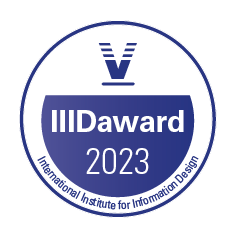Jose Allard
“Symbols in Public Spaces”
Symbols constitute a way to designate concepts such as public spaces and services. Public organizations have developed symbol standards for diverse uses. In 2011, the Chilean National Tourism Service (SERNATUR) requested DiUC to develop a new pictogram system to be used in printed material, signage and other applications related to tourism information. These had to be aligned with international standards, be graphically consistent with Sernatur's new identity and represent the particularities of Chilean tourism attractions and services.
The design of the pictogram system began with an international benchmark. This review included (1) the World Tourism Organization (WTO), which has promoted a standardized symbol system since 1990 (2) the AIGA/DOT standard (US, 1979), a globally spread graphic standard, (3) the BSI British Standard (UK, 2007) and (4) the NPS National Park Service (US, n/d). Regional and local systems were also reviewed, e.g., Argentina, Spain, Peru. A fundamental reference were existing Chilean pictograms developed in the late sixties for road signage in an illustrative - iconic style.
Defining and classifying the symbols in coherent and manageable groups that represent touristic activities, services and places became a main task. New symbols were required for new needs such as the protection of the environment and heritage in tourism contexts, emerging trends for outdoor activities, among others. Pictograms were finally developed in the following eight categories: (1) Earth - Water - Air Touristic Activities, (2) Services, (3) Transportation, (4) Complementary Services, (5) Cultural - Natural Attractions, (6) Protected National Monuments, (7) Environmental Protection and (8) UNESCO Heritage.
Finally during the conceptualization and form giving process, the design of symbols were defined emphasizing simplicity to facilitate representation for multiple needs and activities under different context constraints. Contextual meaning, familiarity for local and foreing users, coherence between symbols and size were also important variables considered. The new National Pictogram System for Tourism in Chile completed 135 pictograms.
Although Dreyfuss’ influential Symbols Sourcebook includes categories such as Accommodation, and Travel or Recreation, maintains categories and keep track of new symbols has become a challenge because other Governmental departments -interested in the success of the project- started to demand new particular pictograms (near 200 symbols today), stressing the limits and coherence of the system.
Biography
The UC Information Design unit (DiUC) at Pontificia Universidad Catolica’s School of Design in Chile, is an academic team that conducts applied research and develops solutions for information problems through visual communication. DiUC purpose is to define, organize and process complex information issues for public institutions by means of design.
< previous - program - next >

